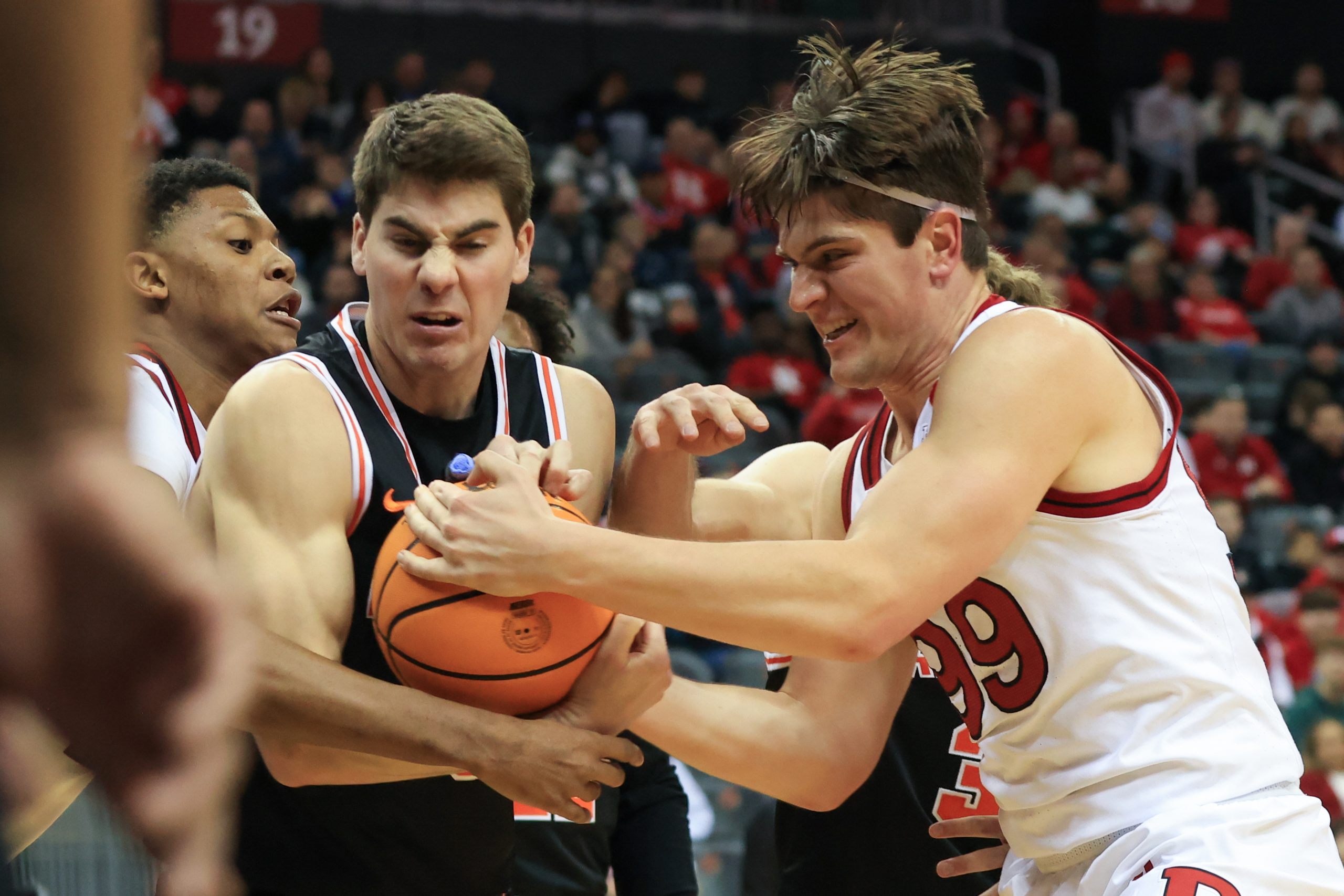Jack Scott: Duke’s Transfer Guard and the 2025–2026 Blueprint for Success
As the Duke Blue Devils prepare for the 2025–2026 college basketball season, much of the anticipation surrounds their incoming class and established core players. Yet, one addition has quietly sparked interest and optimism across Duke Nation and college basketball pundits alike: Jack Scott, the transfer guard. Highlighted by the Blue Zone as a pivotal piece in Duke’s evolving roster, Scott’s arrival promises to inject a blend of experience, skill, and versatility into Coach Jon Scheyer’s system.
In this comprehensive analysis, we’ll delve into Scott’s background, his abilities on both ends of the floor, his potential role within Duke’s scheme, and the broader implications for the Blue Devils as they eye another national championship run.
Jack Scott is a 6-foot-3 guard known for his dynamic scoring ability and tenacious defense. Transferring from a mid-major program where he was a standout contributor, Scott brings not just talent but also maturity and collegiate experience that can be immediately impactful.
Originally a highly touted high school recruit, Scott’s journey through college basketball has been marked by steady development. At his previous school, he averaged around 15 points per game, showcasing a well-rounded offensive skill set highlighted by an improved three-point shot and the ability to create off the dribble. Defensively, Scott is recognized for his quick hands and on-ball pressure, often tasked with guarding the opposition’s best perimeter player.
His decision to transfer to Duke came amid a desire to compete at the highest level, test himself against elite competition, and contribute to a program with a storied tradition of developing NBA-caliber talent.
Jack Scott is best described as a scoring guard with multiple offensive weapons. His ability to score both inside and out makes him difficult to defend, a quality that Duke desperately needs as it looks to diversify its scoring options beyond its star players.
- Three-Point Shooting: At his previous school, Scott shot an impressive 38% from beyond the arc. He has a quick, smooth release and is comfortable spotting up or pulling up off the dribble. Duke’s offensive scheme, which emphasizes spacing and ball movement, should create ample opportunities for Scott to get open looks.
- Mid-Range Game: Scott also excels in the mid-range area, showing a refined pull-up jumper and a knack for using screens to create separation. His footwork and shooting touch in this area give him a reliable scoring option when defenses pack the paint.
- Driving and Finishing: While not an explosive athlete, Scott uses crafty ball-handling and change-of-pace moves to penetrate defenses. His finishing ability, particularly with floaters and runners around the rim, is a strength, helping him convert tough shots in traffic.
Scott isn’t just a scorer; he’s a capable playmaker who can run the offense when needed. His assist-to-turnover ratio is solid, reflecting a guard who values smart decision-making. Though he primarily functions as a shooting guard, Scott can slide into the point guard role in certain lineups, offering Coach Scheyer flexibility in backcourt rotations.
His ball-handling is steady, allowing him to navigate screens and pressure defenses effectively. This will be critical in Duke’s uptempo style, where guards often need to initiate transition offense or break down defenders in half-court sets.
One of Scott’s underrated qualities is his off-ball movement and basketball IQ. He constantly works to find open spaces and understands how to use screens to free himself. His ability to read defenses and anticipate plays helps Duke maintain offensive fluidity.
Duke’s offense thrives on spacing and timing, and Scott’s intelligent movement will be vital in creating scoring opportunities for himself and his teammates.
Defense is where Jack Scott’s impact may be most immediately felt. Duke has occasionally struggled with consistent perimeter defense in recent years, and Scott’s arrival could help stabilize that.
- On-Ball Pressure: Scott is known for his relentless on-ball defense, leveraging quick hands and active feet to harass ball handlers. His defensive tenacity can lead to forced turnovers and disrupt opposing offensive rhythms.
- Switchability: Standing at 6-foot-3 with good lateral quickness, Scott is capable of guarding multiple positions on the perimeter, a valuable trait in today’s switch-heavy defensive schemes. This versatility will allow Duke to mix and match defensive assignments without compromising effectiveness.
- Defensive IQ: Scott’s understanding of team defense concepts, such as rotating to help and communicating switches, fits well with Duke’s defensive schemes under Scheyer. His anticipation and positioning often put him a step ahead, reducing easy scoring chances for opponents.
- Rebounding and Hustle Plays: While not a primary rebounder, Scott’s effort on the defensive glass and willingness to dive for loose balls exemplify his competitive mindset—qualities that Coach Scheyer values highly.
Fit Within Duke’s 2025–2026 Roster
The Blue Zone highlighted Scott not just for his individual talent but for how well he complements Duke’s returning and incoming players. Here’s a look at his projected role and fit:
Balancing Duke’s Backcourt
Duke’s backcourt in 2025–2026 will feature a mix of youth and experience. While the roster boasts promising freshmen and sophomores with high upside, Scott’s experience and reliability provide an anchor point. He can be a stabilizing force, reducing the typical growing pains young guards often experience.
His ability to play both guard positions means Coach Scheyer can deploy him in various lineups depending on matchups. If Duke needs more shooting, Scott can start alongside a primary ball-handler, spacing the floor. In other scenarios, he can run the offense himself, creating plays for teammates.
Leadership and Intangibles
Transfers often bring more than just skill—they bring perspective and maturity from their previous collegiate experiences. Scott’s leadership qualities could be invaluable in the locker room, particularly for Duke’s younger players adjusting to the pressures of playing for a blue-blood program.
His competitive nature and work ethic set a tone during practice and games. As highlighted by the Blue Zone, Scott embodies the “next man up” mentality that Duke prides itself on, ready to contribute immediately and consistently.
Offensive Synergy with Key Players
Duke’s offensive stars will benefit from Scott’s off-ball movement and shooting. His threat from three-point range will open driving lanes for players like Duke’s star wing or primary point guard. This spacing dynamic is crucial in modern college basketball, where defenses often collapse on dominant scorers.
Scott’s ability to read defenses and deliver timely passes enhances the team’s offensive rhythm. He’s the kind of player who doesn’t just score but makes those around him better.
Potential Impact on Duke’s Season
Filling Key Needs
Duke’s 2024–2025 season exposed some vulnerabilities, particularly in perimeter defense and consistent scoring depth. Scott’s arrival addresses both areas directly, providing a two-way presence that can swing momentum in close games.
Depth and Rotation Flexibility
Depth is a championship ingredient. With Scott, Duke gains a reliable sixth or seventh man who can handle starter-level minutes if needed. His presence allows Scheyer to manage player workloads better and adapt tactics during in-game situations.
Mentorship for Younger Players
Scott’s veteran presence will likely influence Duke’s freshmen guards, helping accelerate their development. By sharing insights and leading by example, he can help cultivate a more cohesive and confident backcourt unit.
Challenges and Areas for Growth
No player is without areas for improvement, and Scott is no exception.
- Athleticism: While a smart and skilled player, Scott isn’t the most explosive athlete. This could limit his ability to defend elite quick guards or finish through contact against bigger defenders. Continued strength and conditioning work will be important.
- Consistency: Scott has shown flashes of brilliance but needs to maintain high-level performance over a full season in a Power Five conference. The heightened competition at Duke will test his consistency and resilience.
- Adaptation to New System: Transitioning to Duke’s system and expectations requires adjustment. Scott will need to assimilate into a new coaching style and team culture quickly to maximize his impact.
Jack Scott’s addition to Duke’s 2025–2026 roster represents more than just a transfer. He embodies a bridge between Duke’s rich tradition and its future ambitions. Highlighted by the Blue Zone for his multifaceted skill set and intangibles, Scott offers scoring versatility, defensive grit, and leadership — all vital ingredients for a championship-caliber team.
As Duke looks to reassert itself atop college basketball’s elite, Scott’s contribution could prove pivotal. His ability to fit seamlessly into multiple roles and deliver on both ends of the court positions him as a dark horse candidate for one of the most valuable players on the team.
For Duke fans and college basketball observers alike, Jack Scott is a player to watch. His journey from transfer to potential star encapsulates the modern college basketball narrative — where experience, skill, and opportunity collide to shape a team’s destiny.



